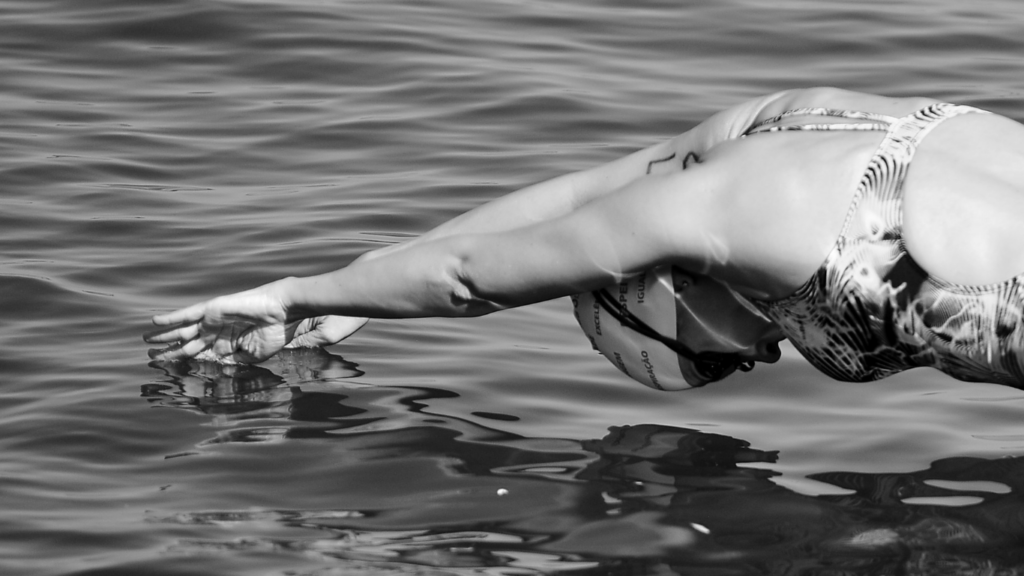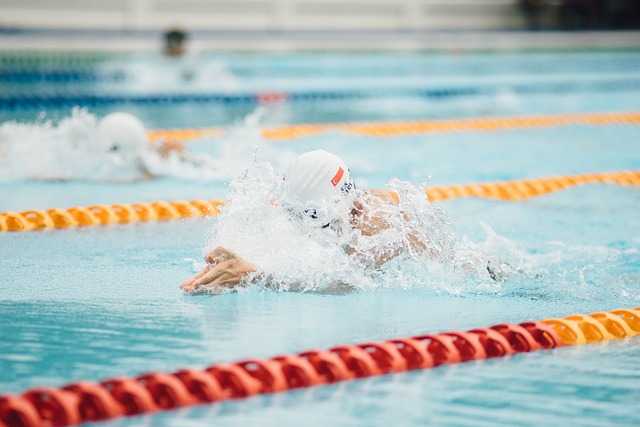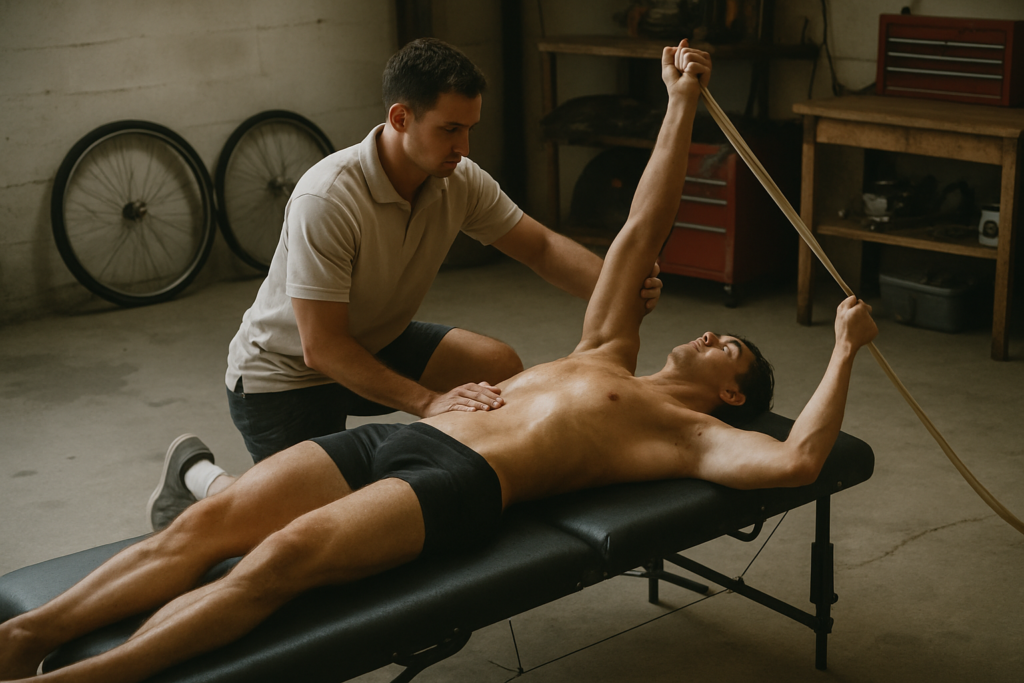Swimming is not just a sport; it’s a way of life. As a dedicated swimmer, I understand the importance of recovery in optimizing performance. In this article, I’ll share valuable insights into effective recovery techniques specifically tailored for swimmers looking to enhance their training regimen.
From post-workout stretches to proper hydration strategies, recovery plays a vital role in preventing injuries and improving overall endurance in the pool. As a seasoned swimmer myself, I’ve experimented with various recovery methods and will highlight the most effective ones backed by science and personal experience.
Whether you’re a competitive athlete or a recreational swimmer, incorporating these recovery techniques into your routine can make a significant difference in your performance and overall well-being. Join me as we dive into the world of recovery strategies designed to help swimmers reach their full potential.
Understanding Recovery in Swimming
Recovery plays a vital role in a swimmer’s performance and overall well-being. As a swimmer dedicated to optimizing my training, understanding the importance of recovery is key. Implementing effective recovery techniques can enhance endurance, prevent injuries, and maximize my time in the pool.
- Why Recovery is Crucial for Swimmers
For swimmers like me, recovery is not just a rest day; it’s an essential component of training. After intense workouts, my muscles need time to repair and rebuild stronger. Without proper recovery, the risk of overuse injuries increases, leading to potential setbacks in training progress. By prioritizing recovery, I can maintain peak performance and stay consistent in my swim training routine. - The Science Behind Muscle Recovery
Muscle recovery is more than just resting; it involves a complex process of repair and growth. When I swim, my muscles undergo stress and microscopic damage. During recovery, the body initiates repair mechanisms that rebuild muscle fibers, making them stronger and more resilient. Understanding this science behind muscle recovery empowers me to adopt targeted recovery strategies that support optimal performance in the water.
Physical Recovery Techniques
As a swimmer dedicated to optimizing performance and preventing injuries, I know the importance of effective recovery techniques tailored specifically for swimmers. Implementing these techniques not only enhances performance but also reduces the risk of overuse injuries, allowing muscles to repair and grow stronger.
Active Recovery Sessions
Incorporating active recovery sessions into your training routine is crucial for swimmers. These sessions involve low-intensity exercises or activities that promote blood flow and help flush out lactic acid from muscles. Examples of active recovery include light swimming, cycling, or gentle yoga sessions. By engaging in active recovery, swimmers can expedite muscle recovery and reduce muscle soreness post-workout.
Stretching and Flexibility Exercises
Prioritizing stretching and flexibility exercises is key for swimmers to maintain optimal performance. Dynamic stretches before a workout and static stretches after can help improve flexibility, reduce muscle tension, and prevent injuries. Common stretching exercises for swimmers focus on the shoulders, back, hips, and legs to enhance range of motion and muscle elasticity, promoting better stroke mechanics and overall performance in the pool.
Massage Therapy
Massage therapy plays a vital role in the recovery process for swimmers. It helps alleviate muscle tightness, reduce inflammation, and improve circulation, enhancing overall recovery and performance. Swimmers can benefit from different types of massages, such as deep tissue massage, sports massage, or foam rolling, to target specific muscle groups and release tension built up from training sessions. Integrating regular massage therapy into a swimmer’s recovery routine can promote relaxation, accelerate muscle recovery, and prevent potential injuries.
Nutritional Strategies for Swimmer Recovery

As a swimmer dedicated to optimizing performance and recovery, I understand the crucial role of nutrition in enhancing recovery post-training sessions. Implementing effective nutritional strategies can significantly impact muscle repair and replenishment. Here are key nutritional aspects swimmers should focus on:
Importance of Hydration
Hydration plays a vital role in the recovery process for swimmers. Proper fluid intake ensures that muscles are adequately hydrated, facilitating nutrient transport and waste removal. Dehydration can lead to muscle cramps, fatigue, and decreased performance. As a swimmer, hydrating with water or electrolyte-rich drinks before, during, and after training sessions is essential to maintain peak performance.
Optimal Post-Workout Meals and Snacks
Consuming the right balance of macronutrients after a swim session is crucial for muscle recovery and glycogen replenishment. A post-workout meal rich in carbohydrates and protein helps repair muscle tissue and refuel energy stores. Opt for whole foods like lean proteins, whole grains, fruits, and vegetables to support recovery. Additionally, incorporating snacks like Greek yogurt with fruits, nuts, or a protein smoothie can aid in sustained energy levels and muscle recovery throughout the day.
By prioritizing hydration and consuming nutrient-dense post-workout meals and snacks, swimmers can accelerate recovery, reduce muscle soreness, and enhance overall performance in the pool.
Psychological Recovery Techniques
As a swimmer, mental relaxation and stress management play vital roles in optimizing recovery post-training. It’s essential to incorporate techniques that promote a calm and focused mindset for overall well-being and enhanced performance in the water.
Mental Relaxation and Stress Management
I find that practicing mindfulness and deep breathing exercises can help swimmers effectively manage stress levels and promote relaxation. By taking a few minutes each day to engage in these techniques, I can enhance my mental resilience and maintain a positive attitude towards training and competition.
The Role of Sleep in Recovery
Quality sleep is crucial for swimmers’ recovery as it allows the body to repair and rebuild muscle tissues. Prioritizing good sleep hygiene by establishing a consistent bedtime routine and creating a restful sleep environment positively impacts overall recovery and performance in the pool. By ensuring adequate sleep, swimmers can maximize the benefits of their training sessions and approach each day feeling refreshed and ready to swim at their best.
Technology and Tools to Enhance Recovery
I rely on innovative technology and sophisticated tools to elevate my recovery process as a swimmer, ensuring optimal performance and injury prevention. Let’s explore how compression gear and advanced recovery systems play a crucial role in enhancing my recovery routine.
Compression Gear
I prioritize the use of compression gear in my recovery arsenal. These specialized garments exert gentle pressure on my muscles, promoting blood circulation and reducing muscle soreness after intense swimming sessions. By enhancing oxygen delivery and minimizing muscle vibration, compression gear accelerates my recovery, allowing me to get back in the pool feeling refreshed and ready to perform at my best.
Advanced Recovery Systems
Incorporating advanced recovery systems into my routine has been a game-changer. These cutting-edge technologies, such as pneumatic compression devices and cold therapy units, aid in reducing inflammation, speeding up muscle recovery, and alleviating post-exercise fatigue. By harnessing the power of these advanced systems, I can recover more efficiently, maintain peak performance levels, and stay ahead in my swimming endeavors.


 is a dedicated fitness enthusiast with a deep-seated passion for swimming and holistic health. Leveraging her extensive background in competitive swimming and personal training, she provides readers with expert advice on optimizing their workouts and enhancing their overall well-being. Kiara's writing stands out for its blend of motivation and practical tips, making complex fitness concepts accessible and actionable. She is committed to helping individuals of all levels reach their fitness goals by promoting a balanced approach to exercise and nutrition. In her articles on Swim Fast Stay Fit, Kiara shares her personal experiences, training techniques, and strategies for overcoming common fitness challenges, inspiring others to lead healthier and more active lives.
is a dedicated fitness enthusiast with a deep-seated passion for swimming and holistic health. Leveraging her extensive background in competitive swimming and personal training, she provides readers with expert advice on optimizing their workouts and enhancing their overall well-being. Kiara's writing stands out for its blend of motivation and practical tips, making complex fitness concepts accessible and actionable. She is committed to helping individuals of all levels reach their fitness goals by promoting a balanced approach to exercise and nutrition. In her articles on Swim Fast Stay Fit, Kiara shares her personal experiences, training techniques, and strategies for overcoming common fitness challenges, inspiring others to lead healthier and more active lives.
